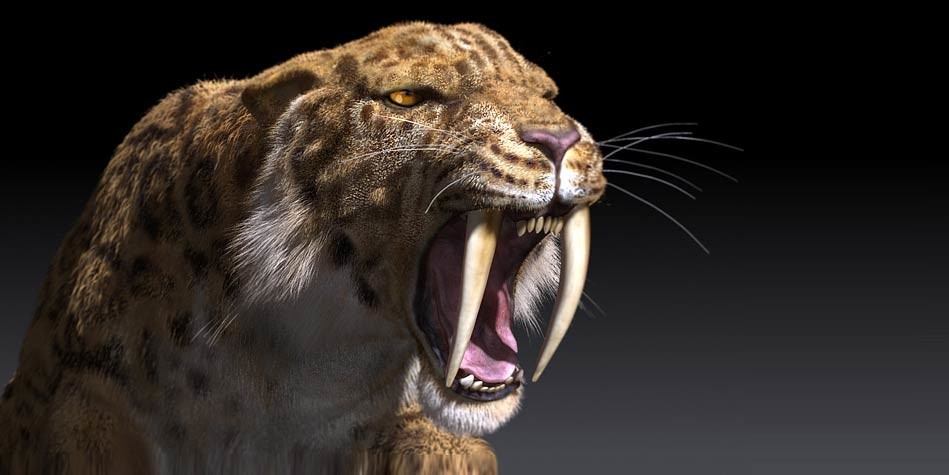The saber-toothed tiger, commonly referring to Smilodon

In 1830, the fossil of the Smilodon populator, a species of the genus Smilodon, was the first to be discovered and described in Brazil by Danish paleontologist, zoologist, and archeologist Peter Wilhelm Lund. In 1842, he named the genus as ‘Smilodon’.
Since the discovery of the first species, other members of the genus began to be documented as well. In 1869, the fossil of Smilodon fatalis was unearthed in North America by the team led by American paleontologist Joseph Leidy. In around a decade, in 1880, the remains of the third species, Smilodon gracilis, was discovered by American paleontologist and comparative anatomist Edward Drinker Cope. These prehistoric animals were distributed from Eurasia to North and South America. Out of the three, the S. fatalis is probably the most well-known species in North America. The creature was abundantly found in California’s Rancho La Brea tar pits.
Since their discoveries, the scientists were able to place the entire genus in relation to modern day fauna by phylogenetic analysis, though nothing much other than a handful of information about these animals could be retrieved from their remains. Like all the cats (big and small), the Smilodons too belonged to the family Felidae, falling under the order Carnivora.
Early DNA analysis placed these creatures within the subfamily Felinae, standard with the modern-day cats. However, recently, more in-depth analysis of the subject revealed that the Smilodons were not a close cousin of the felines (Felinae). They are rather members of a subfamily Machairodontinae, which evolved extant of the Felinae types.











